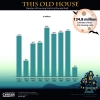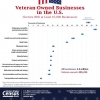Mar182016
Posted at 11:49 AM
The roots of National Women’s History Month go back to March 8, 1857, when women from New York City factories staged a protest over working conditions. International Women’s Day was first observed in 1909, but it wasn’t until 1981 that Congress established National Women’s History Week to be commemorated the second week of March. In 1987, Congress expanded the week to a month. Every year since, Congress has passed a resolution for Women’s History Month, and the President has issued a proclamation.
Following are some key statistics compiled by the U.S. Census Bureau in honor of Women's History Month.
162 million
The number of females in the U.S. as of July 2014. The number of males was 157.0 million.
63%
Percentage of social scientists who were women, the heaviest representation of women among all STEM (science, technology, engineering and math) fields. Among other STEM fields, approximately 14 percent of engineers, 45 percent of mathematicians and statisticians, and 47 percent of life scientists were women. The rates of mathematicians and statisticians, and life scientists are not statistically different from each other.
1.6 million
Number of women veterans in the United States in 2014.
$39,621
The median annual earnings of women 15 or older who worked year-round, full time in 2014. In comparison, the median annual earnings of men were $50,383.
35.8%
Estimated percent of U.S. firms that were owned by women in 2012. They constituted the majority of firms in the health care and social assistance sector (62.5 percent), the educational services sector (54.2 percent) and the “other services” sector (51.8 percent). For comparison, women accounted for 51.4 percent of the 18-and-older population in the U.S. in 2012.
For more key statistics, please see the U.S. Census Bureau's latest issue of Facts for Features Women’s History Month: March 2016.




